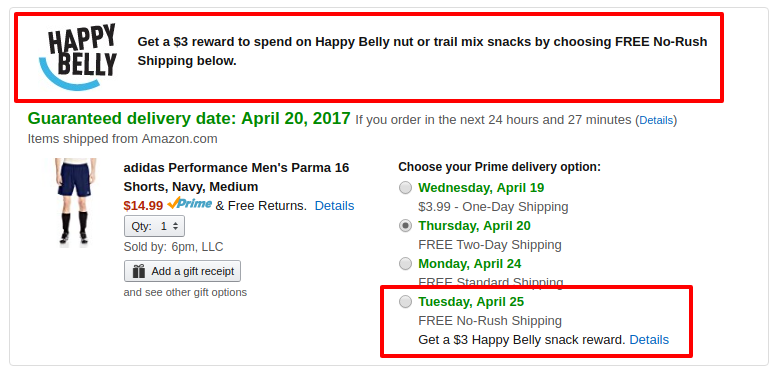

FBA for the W-I-NĮfficient shipping is a key component of any online business or marketplace.Īmazon has been aware of this since its inception and always hung its hat on its ability to quickly get orders to its customers.Īs part of its effort to put shoppers first, Amazon continues to strive to create a better experience for its customers and get items to them even faster. Those who do so open themselves up to a pool of 95 million US shoppers who are much more ready to buy than the typical Amazon customer. Whatever the reason, this stat is evidence of the importance to sellers of achieving Prime-eligible status.
#How many items on amazon ship next day professional#
The spontaneous nature of many home improvement projects and comfort of having a professional help you pinpoint the perfect product continued to drive shoppers to major brick-and-mortar stores like Home Depot and Lowe’s. Amazon sells over 1.1 million home improvement products.įor some time, the home improvement industry was believed to be immune to the dreaded “Amazon Effect.” On a platform that is endlessly seeking to increase its product offerings, the competitive climate is at an all-time high. This is great for Amazon but is also quite daunting for sellers. If you expand this to Amazon Marketplace sellers, as well, the number is closer to more than 350 million products. In its quest to be all things to all people, Amazon has built an unbelievable catalog of more than 12 million products, books, media, wine, and services. “Our vision is to be earth’s most customer-centric company to build a place where people can come to find and discover anything they might want to buy online.” This is Amazon’s mission statement.Īs part of its mission to help customers “discover anything they might want to buy online,” it is crucial for Amazon to sell as many different products as possible, across as many industries as possible. Amazon sells more than 12 million products. As Amazon’s product offering continues to grow, let’s explore how this is affecting sellers, both on- and off-line.

Amazon: Everything to EverybodyĪs the nation’s largest online marketplace, Amazon has a nearly endless variety of products to choose from.Įvery day, customers search for and sift through millions of products in search of the one that will meet their needs. It seems that while Alexa’s voice-activated functionality undoubtedly simplifies the shopping process, consumers still like to see products and view their shopping carts before following through with a purchase. 9 out of 10 consumers price check a product on Amazon.ĭominating nearly half of the US ecommerce market, Amazon is one of the first places consumers turn to when searching for and comparing products. Just think about how different online shopping is now than it was when Amazon launched back in 1994 – or even how different things are now than they were 10 years ago.Īs consumers’ online shopping behaviors continue to change and new technology is introduced, let’s take a look at how customers are shopping on Amazon and ultimately making their purchasing decisions. In the fast-paced world of ecommerce, the way consumers shop online is always changing. 80% of sellers also sell on other platforms outside of Amazon.More than 50% of all Amazon sales come from third-party sellers.Amazon shipped over 5 billion items worldwide in 2017.FBA gives sellers a 30-50% increase in sales.$1.4K is the average spent by Amazon Prime members each year.95 million people have Amazon Prime memberships in the US.Amazon sells over 1.1 million home improvement products.Amazon sells more than 12 million products.2% of Echo owners have purchased a product via Alexa.9 out of 10 consumers price check a product on Amazon.10 Fascinating Amazon Statistics Sellers Need To Know in 2020 In the end, you will have a comprehensive understanding of the current state of the Amazon marketplace and have the tools you need to maximize your Amazon presence in the upcoming year.

Here, we will highlight some of Amazon’s big wins from 2018, trends we are beginning to see form and things for sellers to watch out for moving forward. Well, it all starts by understanding the platform’s key areas of opportunity, as well as acknowledging the issues and hurdles Amazon sellers face. Needless to say, Amazon is the leader in online sales, with no sign of slowing down anytime soon.Īs we kick off 2019, many sellers are asking themselves how they can get a bigger piece of the lucrative Amazon pie.

To put things in perspective, this is more than Amazon’s top three competitors combined, with eBay coming in at 6.6%, Apple at 3.9% and Walmart at 3.7%. That’s 5% of all retail spent across the entire country. In 2018, Amazon’s share of the US ecommerce market hit 49%.


 0 kommentar(er)
0 kommentar(er)
